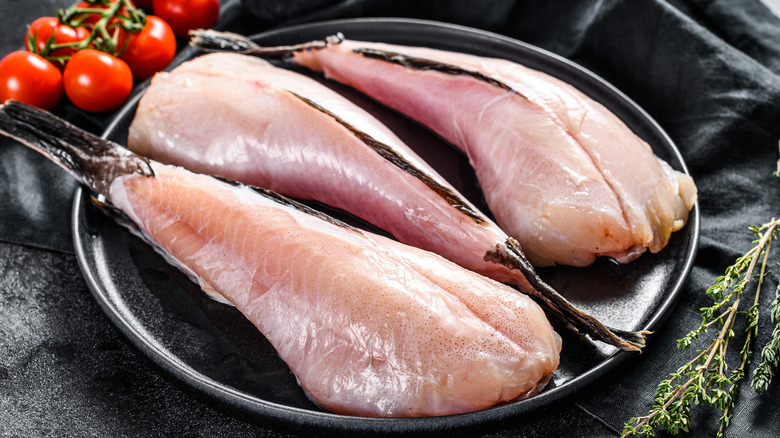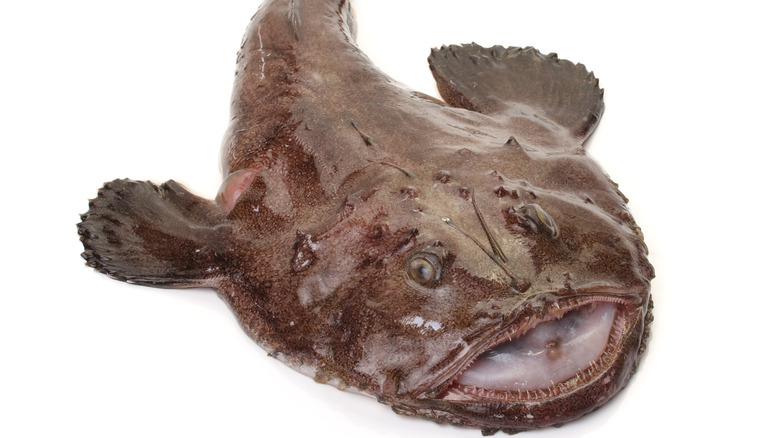The Most Common Way Monkfish Is Sold In The US
If you came face to face with a monkfish while deep-sea diving, you might be scared out of your wits. They resemble the title character from "The Creature From the Black Lagoon," only they swim eerily on their flat bellies. According to NOAA Fisheries, the massive head of a monkfish takes up roughly half of its three- to four-and-a-half-foot body, and it is known for its enormous, gaping mouth full of tiny sharp teeth. The rest of its body tapers to a point, making it look like a menacing overgrown tadpole. Ghastly as they might appear, monkfish are pretty mellow creatures preferring to spend their time covered by the sand, waiting for their prey (which includes everything from shellfish to other monkfish) to come to them.
Despite its frightening face, monkfish happen to taste delicious. Sometimes called the poor man's lobster, monkfish meat is firm and sweet without a strong fishy flavor and (as the name suggests) is much more affordable than lobster, according to The Spruce Eats. Chefs love its versatility, as it is just as tasty with olive oil and lemon juice as with stronger spices like curry and chilies. If this sounds like something you might like, you should be able to find it at a well-stocked fish market, but don't get your hopes up about getting a glimpse of its macabre face in the U.S.
Off with its head
Occasionally a fish market will put a monkfish on display, but this is usually to attract attention and selfie-takers; the whole fish is rarely for sale. Instead, markets will sell the tail filets, which is everything but the head, per Fresh Fish Daily. Though giant, the only edible part of the monkfish's head are the cheeks, which have the delicate texture of scallops. For the most part, American fisheries discard the head, though many European fisheries take the trouble to harvest the cheeks. French for Foodies even says that monkfish heads are so heavy that they are tossed overboard at sea to save storage space and reduce weight. The outlet also mentions that the fish has seven layers of skin, and essentially no home cook wants the task of getting through all that to get to the filets.
The Spruce Eats says that monkfish liver is a rare treat in Japan, and it's sometimes used in hand rolls or nigiri sushi. Because monkfish is so firm, it is well suited for various cooking methods, including grilling and roasting, but it can get dry if it's overcooked, according to MasterClass. Monkfish is an excellent choice for seafood lovers as it is plentiful, sustainable, and harvested under rigorous U.S. regulations, as noted by NOAA Fisheries. In addition, Fresh Fish Daily suggests it is a fish that is low in fat and high in vitamins and minerals, giving you lots of flavor without many calories.

